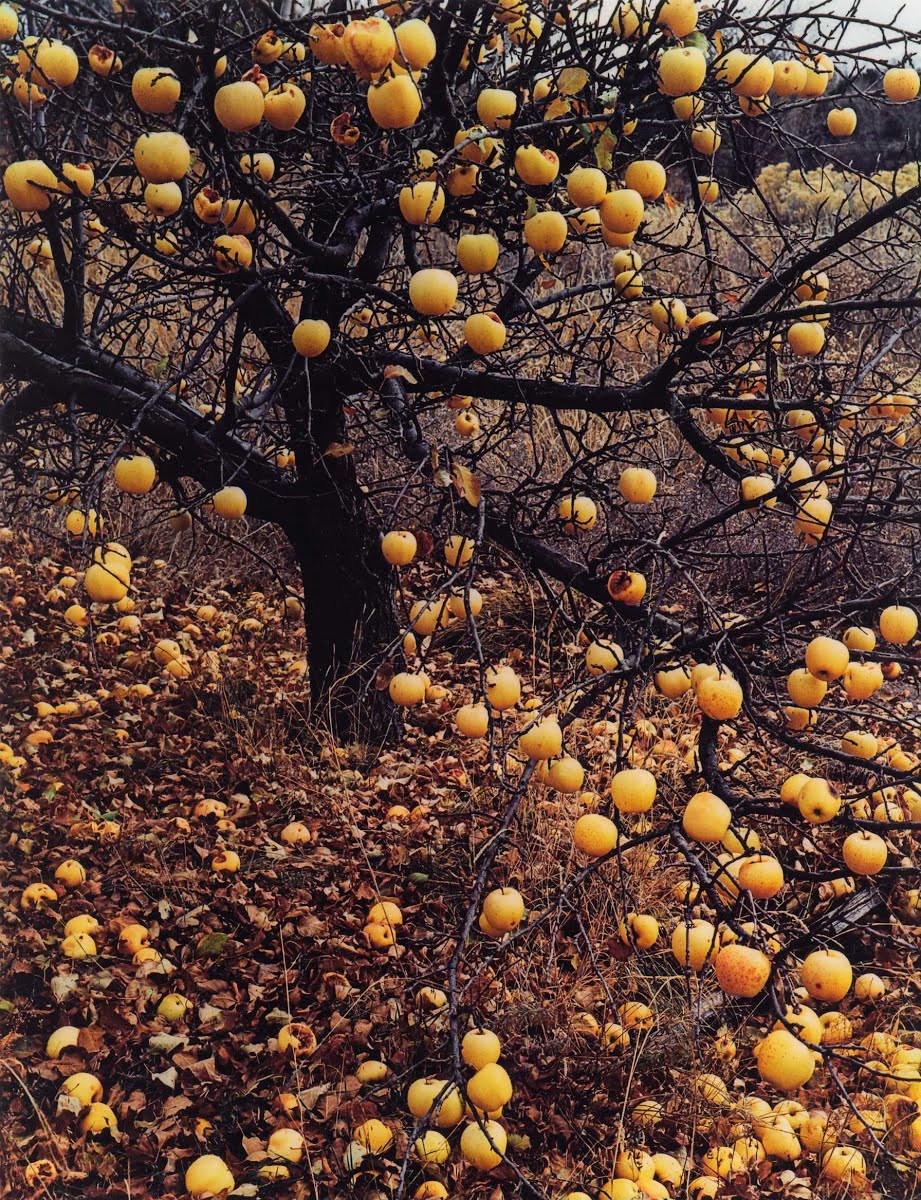|
I don't know the title of the photograph I'm looking at. I could probably find it online but I don't know if that would help much because the colours would be all wrong. The photo is in the book In Wilderness Is the Preservation of the World, opposite December 24, 1841 and a short text by Thoreau which describes aspects of the pond. In the foreground there are two very slender trees just coming into bud, overhanging a lake or a river, probably taken around the time of year that I'm writing this, early spring. The two slender trees are to the left of centre, one mid to light grey with a hint of grey-green in the lower two thirds. The smaller tree nearer the centre is lighter grey and its upper branches, lighter grey than the trunk, stretch across the centre of the frame towards the left-hand side, offering horizontal contrast to the verticals. The sun seems to be catching the upper third of the image and it's here that I'll make my first point about Porter's work. So many of his pictures use the top third (and less frequently the bottom third) of the image space to differentiate either textures, density, tints from shades, hues of colour, light and shadow. If we focus on the water there's a very even gradient of light to dark from top right to bottom left. The water is diagonally rippled at almost perfectly spaced intervals affording a third sense of direction. Obviously the water has blue in it, but there's also a lot of grey, yet none of this interferes with the tree colours. The colours are desaturated by today's standards, but not under-saturated. There's just enough colour in the water to offset the grey of the trees. I see this as a strength. The buds, again in the top third of the image, are a dark reddish brown - the sticky leaf within is just beginning to show and there's just enough colour to tease the eye and add a third dimension to the palette. There are smaller buds in the lower third (and a sparser gap in the middle which is probably the cleverest part of the whole composition) but these are still dormant, contrasting with the upper buds.
And that's it. An apparently unremarkable picture that we've all seen on our walks in nature. But near perfect.
0 Comments
When I decided to take a serious interest in photography I had some specific objectives in mind. Then new ideas came along, transformed and supported by intensive research and experimentation. At the moment I’ve settled into an emerging practice around botany, woodland and landscape, though not of the spectacular eye-popping variety.
But before any of that I have a confession to make. Having access to relatively unspoiled woodlands I began trying to make sense of framing the chaos of the forest. This took me quite rapidly to the work of Eliot Porter among others. I’ve never seen Porter’s dye transfer prints in the flesh - by all accounts they are outstanding works of art - but even with the low resolution images accessible online you can fully appreciate the quality of the compositions, the sense of colour and the intelligence in how Porter presents his series’. I had this gnawing feeling of déjà vu and was sure I had a book of Porter’s work in a box out in my studio. A year or so ago I began making collages out of old photographs pilfered from books and magazines. As part of this work I made series of pieces merging woodland and erotic imagery, inspired in part by Ovid’s Metamorphoses. So yes, mea culpa, it was indeed Porter’s images that I’d butchered to make my simple two or three-cut collages. Today the book, “In Wilderness Is the Preservation of the World”, published by The Sierra Club, has become an object of deep fascination for me. What I saw initially as intriguing pictures of woods and rivers I now read as investigations of the deepest complexity in form, colour, depth of field and other important attributes of good photography. Working with these images as material for collage I remember spending a lot of time admiring the colour and compositions, and feeling uneasy about spoiling them. But I wasn’t ready for Porter at that point. The images are set alongside text by none other than Henry David Thoreau who knew a thing or two about the power of wild places. Most of the book is intact - I have all but the four or five images I used for collage and of these I could steam off the pieces I glued to the prints. The prints are outstanding. Obviously they’re prints of prints but the editors and publishers have made great efforts to reproduce Porter’s work as well as anyone could. We are told in the publisher’s note that ‘ “In Wildness….” is lithographed in four colours on 90-lb. coated stock and lacquered to achieve maximum brilliance and fidelity in the color reproductions, themselves made from 4 x 5 transparencies, except for one 2 1/4 x 2 1/4….. The color, however is the main thing to display, and we could find no technique for displaying it better. We consulted five domestic printers and four in Europe before we found our solution.’ This makes me feel guilty and smug in equal parts. I have the next best thing to Porter’s original prints in my hands and so, as well as providing me with the best research resource for my own practice, it’s these that I want to make the subject of my photographic blog posts over the next few months. |
Music, photography, experimental film.processes, methods, experiments, research, drafts, sketches and observations. Archives
February 2021
Categories
All
|

 RSS Feed
RSS Feed